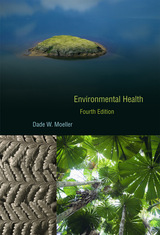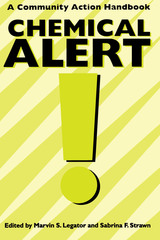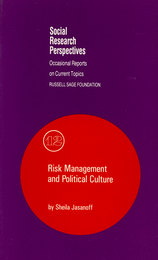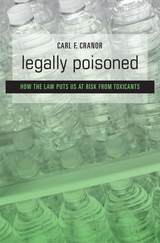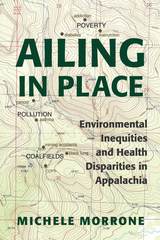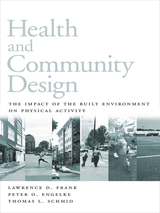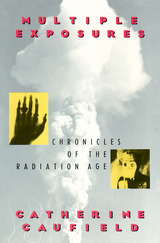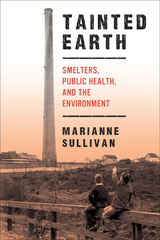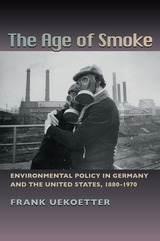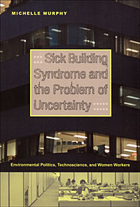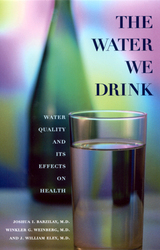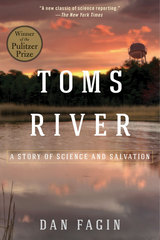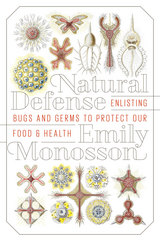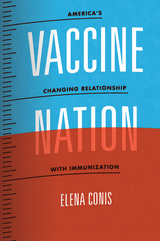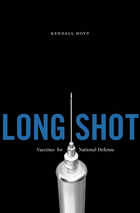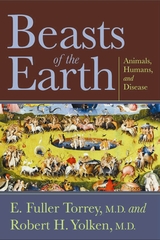Cloth: 978-0-674-00740-6 | eISBN: 978-0-674-26005-4
Library of Congress Classification RA569.S5 2002
Dewey Decimal Classification 616.07570289
This highly successful manual has served for nearly three decades as the definitive guide to the safe use of radioactive materials. Completely revised and updated, the fourth edition presents a new dimension by adding coverage of nonionizing radiation, and is thus concerned with the entire field of radiation protection.
The author takes the novel approach of introducing the whole range of energies possessed by particles and electromagnetic waves at the beginning of the text, thus integrating coverage of ionizing and nonionizing radiation rather than considering them as two separate disciplines. He goes on to cover the entire spectrum of radiation sources, including radionuclides, x-ray machines, accelerators, nuclear reactors, power lines, microwave towers, and cellular phones.
With its expanded coverage, including a broader focus on public health issues, this new volume will serve as an important training and reference resource, not only for research scientists, physicians, and engineers, but for regulatory officials, attorneys, engineers, and environmental health and safety professionals. The breadth of citations alone makes this resource invaluable.
-- Rose Marie Pratt Health Physics
-- Nature
-- American Association of Physics in Medicine
-- American Journal of Roentgenology
PART ONE I Energy-The Unifying Concept in Radiation Protectio Radiation's Dual Identity 9 1.1 From Energy to Radiation Dose 10 Energy Relationships in the Hydrogen Atom 11 Energy Levels in Atoms with Higher Z 13 Energy Levels in Molecules 14 Energies of Motion Associated with Temperature 14 Bonding Energies 15 Energy from Mass-The Ultimate Energy Source 16 Some Interesting Energy Values 17 PART TWO I Principles of Protection against Ionizing Particles The Approach 18 Energy and Injury 19 Charged and Uncharged Ionizing Particles 20 Energy Transfer by Charged Particles 20 5 The Stopping Power Equation 22 6 Beta Particles-A Major Class of Charged Ionizing Particles 23 Properties of Some Common Beta-Emitting Radionuclides 25 Protection from External Beta Particle Sources-Time, Distance, and Shielding 31 7 Characteristics of Uncharged Ionizing Particles 33 8 Gamma Rays-A Major Class of Uncharged Ionizing Particles 33 Energies and Penetration of Gamma Rays from Some Gamma-Emitting Radionuclides 35 Positron-Emitting Radionuclides and Annihilation Radiation 38 The Three Major Mechanisms Affecting the Penetration of Gamma Radiation 39 Attenuation Coefficients of Gamma Photons in Different Materials 44 Calculation of Attenuation of Gamma Photons by the Half-Value Layer Method 47 Protection from Gamma Sources-Time, Distance, Shielding 50 9 Heavy Charged Ionizing Particles 51 The Alpha Particle-A Heavy Particle with High Linear Energy Transfer and High Capacity for Producing Damage 51 The Proton-Another Heavy Charged Particle with High Linear Energy Transfer 53 10 The Neutron-A Second Important Uncharged Ionizing Particle 54 Sources of Neutrons 54 Neutron Collisions 56 Attenuation of Neutrons 57 11 The Absorbed Dose-A Measure of Energy Imparted to a Medium 60 The Pattern of the Imparted Energy in a Medium 60 Definition of Absorbed Dose 62 The Gray-The SI Unit for Absorbed Dose 62 12 The Equivalent Dose-A Common Scale for Doses to Organs and Tissues from Different Radiation Types and Energies 63 The Radiation Weighting Factor and the Quality Factor-Measures of the Relative Hazard of Energy Transfer by Different Particles 64 The Sievert-The Special Unit of Equivalent Dose 66 13 Tissue Weighting Factors and the Effective Dose-A Measure of Risk and Severity of Consequences 67 14 The Roentgen-The Traditional Unit for Expressing Radiation Exposure 71 15 The Significance of External Radiation Levels 72 16 Exposure from Internal Radiation Sources 77 The Activity-A Quantity for Describing the Amount of Radioactivity 77 The Unit of Activity-The Becquerel 77 The Accumulating Dose from Radioactivity in the Body and the Committed Dose 78 17 The Annual Limit on Intake-The Basic Quantity for the Control of Internal Exposures 80 18 Limit for the Concentration of a Radionuclide in Air- A Derived Limit 81 19 Levels of Radioactivity inside the Body-A Useful Benchmark for Internal Exposure 82 20 Protection from Radioactive Contamination 84 21 Some Simple Calculations in Radiation Protection 85 Dose from Beta Particles 85 Exposure Rate and Dose Rate from Gamma Photons 89 Reduction of Dose Rate by Both Distance and Shielding 91 Correction for Radioactive Decay 92 Shielding of Large or Complex Sources 92 22 X Rays-Radiation Made by Machine 94 Production of X Rays 96 Diagnostic Radiology 98 X-Ray Attenuation in the Body 99 Effects of Photon Energy Distribution on Image Formation and Absorbed Dose 101 A Description of an X-Ray Machine 105 Production of a Photograph of the X-Ray Image 111 Fluoroscopy 112 Mammography 116 Computed Tomography: Taking Cross Sections with X Rays 119 Technical Approaches for Minimizing the Doses Required to Record an X Ray 121 Impact of the Digital Computer in Radiation Medicine 123 23 Dose Measurements in Diagnostic Radiology 124 24 Exposure Guides and Reference Levels in Diagnostic Radiology 127 25 Protection of the Patient in X-Ray Diagnosis 129 Principles 131 Policy of the International Commission on Radiological Protection 132 Studies in the United Kingdom 133 Radiography of the Spine in Scoliosis Patients-A Prime Candidate for Dose Reduction 134 Screening for Specific Diseases 135 26 Radiation Levels in the Working Areas around X-Ray Machines 135 Shielding the X-Ray Beam 138 27 Dose Reduction in Nuclear Medicine 142 28 Exposure of the Embryo, Fetus, or Nursing Child 142 29 Protection of the Patient in Radiation Therapy 143 Treatment with External Radiation Beams 144 Brachytherapy 145 Therapeutic Use of Radiopharmaceuticals 146 30 Misadministrations in the Medical Use of Radiation and Radioactive Material 146 31 Occupational Exposures Incurred in the Medical Use of Radiation 147 Studies of Occupational Exposures in the Conduct of Specific Procedures 148 32 Comments for Users of X-Ray Diffraction Machines 152 33 Particle Accelerators-The Universal Radiation Source 155 History of Particle Accelerators 156 Interactions of High-Energy Particles 158 Shielding High-Energy Particles 160 Particle Accelerators in Radiation Therapy 161 34 Regulation of Radiation Sources and Uses 164 Regulatory Measures for Medical Radiation Programs 166 PART THREE : Radiation Dose Calculations 167 1 Dose from Beta-Emitting Radionuclides inside the Body 168 Calculating the Initial Dose Rate 169 Dose Calculations for a Decaying Radionuclide 169 Some Relationships Governing Radioactive Decay 170 Relationships Involving Both Radioactive Decay and Biological Elimination 172 Absorbed Beta Dose over a Period of Time 174 2 A Closer Look at the Dose from Beta Particles 175 Beta Particle Point Source Dose-Rate Functions 175 Evaluation of Beta Particle Dose from the Fluence and Stopping Power 176 3 Calculation of the Absorbed Dose from Gamma Emitters in the Body 178 Dose Rate from a Point Source of Photons-The Specific Dose-Rate Constant for Tissue 178 Evaluation of the Specific Dose-Rate Constant 179 Dose Rate from Distributed Gamma Sources 183 The Absorbed-Fraction Method-Dose within the Source Volume Dose to Targets outside the Source Volume by the Absorbed-Fraction Method 184 The Specific Absorbed Fraction-Sparing the Need to Divide by the Target Mass 185 Use of the Equilibrium Dose Constant-Computer-Generated Sourc Output Data 186 The S Factor-Doses from Cumulated Activity 188 4 Summary of Formulas 189 Radioactive Decay 189 Physical Decay and Biological Elimination 189 Dose from Nonpenetrating Radiation from Internal Emitters 189 Dose from Penetrating Radiation from Internal Emitters 190 Inverse Square Law 190 Dose Rates at a Distance from Gamma Sources 190 Attenuation of Radiation 191 Equivalent Dose 191 5 Dose Calculations for Specific Radionuclides 191 Hydrogen-3 (Tritium) 192 Iodine-131 and Iodine-125 197 Strontium-90 -> Yttrium-90 -> Zirconium-90 202 Xenon-133 and Krypton-85 205 Uranium-238 and Its Decay Products 213 Radon-222 and Its Decay Products 216 Plutonium-239 and Plutonium-240 221 6 Dose Rates from Small, Highly Radioactive Particles 224 Evaluation of the Dose from Beta Particles 225 Biological Effects of Hot Particles 225 Risk of Cancer from Hot Particles 227 Highly Radioactive Particles in Fallout 228 Recommendations of the NCRP on Limits of Exposure to Hot Particles 228 NRC Enforcement Policy for Exposures to Hot Particles 229 7 The Radioactive Patient as a Source of Exposure 229 8 Radiation Doses in Nuclear Medicine 231 Dose to the Fetus from Uptake of Radionuclides from the Mother 235 9 Evaluation of Doses within the Body from X Rays 236 Patient Doses in Mammography 239 Evaluation of Doses in CT Examinations 240 10 Survey Results, Handbooks, and the Internet 245 Surveys of Doses in X-Ray Examinations 245 11 Producing an Optimum Radiation Field for Treating a Tumor 246 PART FOUR : Radiation Measurements 250 1 Radiation Counting with a Geiger-Mueller Counter 250 A G-M Counter Described 251 Adjusting the High Voltage on a G-M Counter and Obtaining a Plateau 252 How a G-M Counter Can Lose Counts and Even Become Paralyzed 252 How to Distinguish between Beta and Gamma Radiation with a G-M Counter 254 How to Determine Source Strength of a Beta Emitter with a G-M Counter 255 Factors Affecting Efficiency of Detection of Beta Particles 256 Correcting for Attenuation of Beta Particles by Determining Absorption Curves 258 Counting Gamma Photons with a G-M Counter 259 Standardization of Radionuclides with G-M Counters 259 Interpreting Counts on a G-M Counter 262 2 Energy Measurements with a Scintillation Detector 263 Description of Scintillation Detectors and Photomultipliers 264 Pulse Counting with a Scintillation Counter and Scaler 264 Pulse-Height Distributions from Scintillation Detectors 266 Electronic Processing of Pulses Produced by Scintillation Detectors 270 3 Detectors for Special Counting Problems 279 Gas-Filled Proportional Counters 279 Semiconductor Detectors 282 4 Measuring Radiation Dose Rates 283 Measuring X and Gamma Dose Rates with Ionization-Type Survey Meters 283 Use of Scintillation Detectors to Measure Dose Rates 286 Use of G-M Counters to Monitor Dose Rates 286 Routine Performance Checks of Survey Meters 287 Calibration of Survey Meters 288 Beta Dose-Rate Measurements 294 Neutron Monitoring 295 5 Measurirg Accumulated Doses over Extended Periods-Personnel and Environmental Monitoring 296 Use of Biodosimetry in Reconstructing Radiation Exposures 300 6 Specifying Statistical Variations in Counting Results 302 Nature of Counting Distributions 303 Sample Average and Confidence Limits 304 Standard Deviation 305 The Normal Error Curve-A Good Fit for Count Distributions 306 Precision of a Single Radiation Measurement 308 The Effect of Background on the Precision of Radiation Measurements 309 The Precision of the Ratio of Two Measurements 312 Testing the Distribution of a Series of Counts- The Chi-Square Test 312 Measurements at the Limits of Sensitivity of Detectors 314 7 Comments on Making Accurate Measurements 320 PART FIVE : Practical Aspects of the Use of Radionuclides 32 1 Obtaining Authorization to Use Radionuclides 323 Administration of Radioactive Material to Humans 327 Requirements for Obtaining Approval to Use New Radioactive Drugs 328 Protection of the Patient in Nuclear Medicine 329 2 Training Required for Working with Radionuclides 332 Implementation of a Training Program 333 Radiation Safety within a Comprehensive Institutional Program in Laboratory Safety 334 3 Responsibilities of Radionuclide Users 336 4 Standards for Protection against Radiation 337 5 Personnel Monitoring for External Radiation Exposure 338 Ambiguities in Using the Personnel Dosimeter Dose as a Surrogate for Personnel Dose 339 6 Monitoring Personnel Subject to Intakes of Radioactive Material 339 7 NRC and ICRP Values for Annual Limits on Intake and Airborne Radioactivity Concentration Limits 342 Air Monitoring for Environmental Radioactivity 349 8 Posting of Areas 349 9 Laboratory Facilities 350 10 Protective Clothing 353 11 Trays and Handling Tools 354 12 Special Handling Precautions for Radioiodine 354 12.1 Use of Potassium Iodide as a Thyroid-Blocking Agent 356 13 Hygiene 357 14 Trial Runs 357 15 Delivery of Radionuclides 357 16 Storage and Control of Radionucides 358 17 Storage of Wastes 359 18 Waste Disposal 359 Disposal of Gases to the Atmosphere 360 Disposal of Liquids to Unrestricted Areas 362 Disposal of Liquid Wastes to Sanitary Sewerage Systems 362 Solid Wastes 364 Disposal oh Site by Incineration and Other Methods 364 Government Regulation of the Disposal of Hazardous Wastes 365 Volume Reduction in Waste Disposal 367 The Designation of De Minimus Concentrations of Radioactivity 368 Natural Radioactivity as a Reference in the Control of Environmental Releases 369 19 Use of Radioactive Materials in Animals 372 20 Transportation of Radionuclides 373 Transportation within the Institution 373 Mailing through the U.S. Postal Service 373 Shipment of "Limited Quantities" 376 Shipment of "Low-Specific-Activity" Materials 377 Shipment of Type-A Packages 377 Shipping Papers and Shipper's Certification 379 21 Contamination Control 380 Monitoring for Contamination 380 Decontamination of Equipment and Buildings-Limits for Uncontrolled Release 381 22 Personnel Contamination and Decontamination 383 23 Leak Tests of Sealed Sources 383 24 Notification of Authorities in the Event of Radiation Incidents 385 25 Termination of Work with Radionuclides 385 APPENDIX A: Emergency Instructions in the Event of Release of Radioactivii and Contamination of Personnel 386 Objectives of Remedial Action 386 Procedures for Dealing with Minor Spills and Contamination 386 Personnel Decontamination 387 Major Releases of Airborne Radioactivity as a Result of Explosions, Leakage of High-Level Sealed Gaseous and Powdered Sources 387 APPENDIX B: The Regulatory Process 388 Radiation Control at the Federal Level 388 Radiation Control at the State Level 394 Inspection and Enforcement 394 APPENDIX C: Control of Airborne Releases to the Environment 396 Dilution in the Atmosphere 397 Filtration of Particles 399 Adsorption of Gases and Vapors on Charcoal 401 Adsorbers for Radioiodine 403 PART SIX : Ionizing Radiation and Public Health 1 Formulation of Standards for Radiation Protection 405 Standards for Protection of the Public against Radioactive Contamination 414 Standards for the Cleanup of Sites Contaminated with Radioactivity 415 Protective Actions for Exposures of the Public from Long-Term and Unattributable Sources 416 2 Medical Findings on Humans Exposed to Radiation 417 Sources of Human Exposure Data 418 Epidemiological Studies of Leukemia and Other Cancers 425 Risk of Cancer from Exposure to Radiation 434 Effects on the Developing Embryo 438 Genetic Risks 439 Basic Mechanisms in the Genesis of Cancer by Ionizing Radiation 440 3 Risks to Health from Exposure to Alpha Radiation 442 Evolution of Protection Standards for Radon Gas and Its Decay Products 442 Risk of Lung Cancer from Extended Exposure to Radon and Its Short-Lived Decay Products 446 Exposure of Bone to Alpha Radiation 451 4 Implications for Humans from Results of Animal Experiments 451 5 Sources Producing Population Exposure 453 Natural Sources of External Radiation 454 Natural Sources of Radioactivity within the Body 458 Population Exposure from Medical and Dental X Rays 464 Population Exposure (Internal) from Radiopharmaceuticals 467 Environmental Radiation Levels from Fallout from Past Weapons Tests 467 Potential External Exposure to the Population from Large-Scale Use of Nuclear Power 470 Population Exposure (Internal) from Environmental Pollutants 470 6 Population Exposure from Radiation Accidents 483 Windscale, England-The First Major Nuclear Reactor Accident Causes Significant Environmental Contamination 483 Palomares, Spain-Atomic Bombs Drop from the Sky, Igniting and Contaminating a Countryside 485 Thule, Greenland-A Bomber Crashes and Its Nuclear Weapons Ignite 487 Rocky Flats, Colorado-A Case History in Environmental Plutonium Contamination from an Industrial Plant 488 Gabon, Africa-Site of Nature's Own Nuclear Reactor 490 Three Mile Island, Pennsylvania-A Nation Confronts the Awesome Presence of the Atom 491 Chernobyl-The Fear of a Nuclear Catastrophe That Became a Reality 498 Nuclear Power from the Perspective of the Three Mile Island and the Chernobyl Accidents 500 7 Nuclear Weapons-Ready for Armageddon 504 PART SEVEN : Exposure to Nonionizing Electromagnetic Radiation 1 Electromagnetic Fields-Quantities, Units, and Maxwell's Equations 513 The Electric Field 513 The Magnetic Field 515 Maxwell's Equation for Faraday's Law of Induction 515 Maxwell's Equation for Ampere's Law as Modified for the Displacement Current 515 The Interactions of Electric and Magnetic Fields in a Medium 517 2 Interaction of Fields from Electric Power Lines with the Body 518 3 The Physics of Radiating Electromagnetic Fields 520 The Derivation of Equations for Electromagnetic Waves from Maxwell's Equations 521 Electromagnetic Waves Generated by a Sinusoidal Oscillator 522 Relationships of Photons and Waves 524 4 Absorption of Electromagnetic Radiation in the Body 524 Penetration of EMF into the Body 525 Induced and Contact Currents 525 5 Specifying Dose to Tissue from Electromagnetic Fields 526 The Production of Heat as the Main Biological Effect 526 Resonance-A Special Concern in Exposure to Radiofrequency Radiation 527 The Specific Absorption Rate-The Basic Quantity for Assessment of Exposure to Radiofrequency Radiation 527 6 Devices That Produce Electromagnetic Fields 528 Antennas 528 Cellular Phone Networks 530 Magnetic Resonance Imaging (MRI) 531 Video Display Terminals 533 7 Making Measurements of ELF and Radiofrequency Electromagnetic Fields 535 8 Standards for Protection against Electromagnetic Fields 536 Power Lines 537 Radiofrequency Standards 537 Telecommunications Standards 540 Microwave Ovens 542 Video Display Units 543 Static Magnetic and Electric Fields 543 Comparison of Basic Limits for Ionizing and Nonionizing Radiation 543 9 Medical Findings on Humans 544 Static Magnetic Fields 544 Extremely Low Frequencies, Incuding Power Lines 546 Radiofrequencies 550 10 Effects on Animals-Basic Research 555 11 Exposures from Environmental Fields 556 Broadcasting: The Dominant Source of RF Radiation in the Environment 557 Radar Installations for Civilian and Military Purposes 557 Transmitters for Cellular Phone Systems 558 Power Lines 558 Home and Office 559 12 Effects of Electromagnetic Interference on Pacemakers 560 PART EIGHT : Current Issues in Radiation Protection: Where the Experts Stand 1 On Electromagnetic Fields 566 2 On Defining and Regulating the Hazards of Exposure to Ionizing Radiation 568 On the Validity of the Linear No-Threshold (LN-T) Theory, That the Effects of Radiation Are Directly Proportional to the Dose Down to Zero Dose 568 The Exemption from Regulatory Control of Radiation Levels Below Which Causation of Cancer Is Considered Insignificant 569 3 On Reducing Population Radiation Exposure from Medical and Dental X Rays 570 4 On the Safety of Nuclear Power 573 5 On the Hazards of Nuclear Weapons Tests and Underground Explosions 576 Hazards to the Public from Fallout from Atmospheric Testing of Nuclear Bombs 576 Safety of the Use of Nuclear Explosives Underground for Large-Scale Excavation or Development of Natural Resources 577 6 On the Consequences to Civilization of an All-Out Thermonuclear War 578 7 A Personal Statement 580 APPENDIX I: Problems 583 APPENDIX II: Data on Selected Radionuclides 590 APPENDIX III: Some Constants, Conversion Factors, and Anatomical and Physiological Data 594 Selected Bibliography 597 References 601 Index 649
See other books on: Dosage | Guide for Scientists | Ionizing radiation | Radiation | Safety measures
See other titles from Harvard University Press

